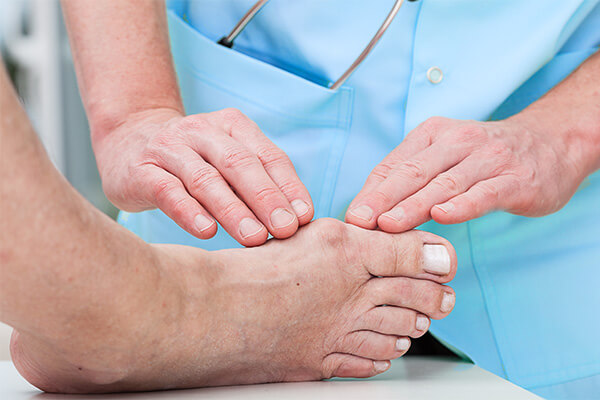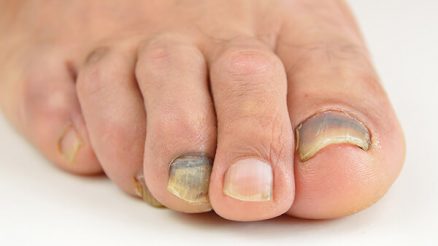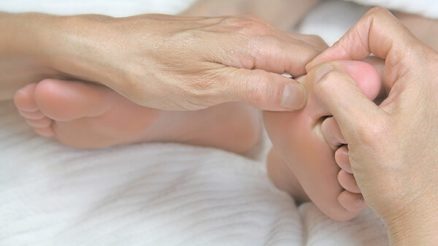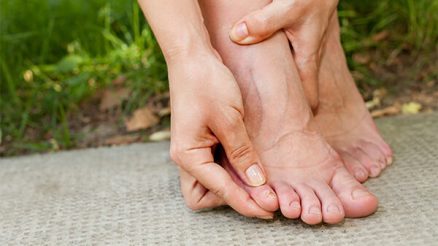
Did you notice a development of a lump on side of foot? In such case, you may have to diagnose your condition right away to select the most appropriate treatment. The bump on side of foot should not be taken for granted, since it may be brought by a lot of factors.
There are cases that the knot on side of foot may only be part of your normal anatomy. Nonetheless, there are times when the painful bump on side of foot is due to abnormal occurrences in your body. If you want to prevent the condition from worsening, you should identify its probably cause right away.
For every possible cause of bumps on toes, there is a corresponding treatment option. This gives you the freedom to eradicate your problem as soon as possible.
Causes of Lumps and Bumps on Side of Foot
In case a bump on side of foot develops, you should be concerned right away. No matter how mild the condition is compared to cancer, you will never know the consequences it can bring. Be reminded that a lump on foot can cause difficulty in walking or running.
Do you know that the typical size of a bump on foot can further increase? It is an alarming situation, especially now that cancer may also develop in such cystic formation. Although it is rare, there is nothing better than finding means to eradicate it.
Once you have detected a bump formation on your foot, you should consider determining its exact causes. Possible ones are the following:
Bunions
The development of a lump on side of foot may be due to this condition. This is characterized by the prominence of a bony structure at the big toe’s base. It is also considered a progressive deformity.
If you want to address this problem, you may begin with choosing a special footwear, using ice compression, and taking proper rest. Alternatively, you may consult your doctor to prescribe steroid injections and other medications.
Surgery may also be recommended for the development of a bump on foot, depending on the severity of bunions.
Tailor’s Bunion
This other cause of a lump on side of foot is also known as a bunionette. It is characterized by the development of a bony structure at the pinky toe’s base. The deformity targets the fifth metatarsal bone.
Compared to bunions, this cause of a hard bump on side of foot is not common. In order to address this problem, there are non-surgical solutions, such as orthotic devices, shoe changes, ice pack application, injection therapy, padding, and oral medications among others.
In case none of the remedies provided has worked, a surgical operation may be necessary to solve the deformity.
Hammertoes
This ailment, which may result in the development of a lump on side of foot has two major types. Flexible hammertoe is characterized by the movable joint in the affected toe. Alternatively, rigid hammertoe is characterized by rigid tendons.
Apart from the bump on side of foot, you may also encounter difficulty in wearing a shoe with this problem. Swelling, corns development, and pain during movement are other symptoms of the problem.
Treatments available for the problem are good-fitting footwear, metatarsal pads, anti-inflammatory drugs, and exercises among others.
Ganglion Cysts
These are very common lumps that may also represent your bump on outside of foot. It may also develop in your wrist and hand, particularly at the adjacent tendons or joints. You can identify this ailment by finding a stalked water balloon-like growth on your skin.
Normally, this lump on outside of foot contains either a clear gel or fluid. This may develop in patients of all ages. It may grow, reduce in size, or disappear by itself.
If these cysts are painless, you may simply observe it. In contrary, anti-inflammatory medicines or splints may be recommended.
Styloid Process of the Fifth Metatarsal
The lump on outside of foot may be brought by the swelling in the styloid process of the fifth metatarsal. This is a common complaint among children, especially when the body part is in the growth process.
Possible treatment options for this bump on outside of foot may include a break from physical activities like sports. Rest may also be recommended by the physician. However, there are also acute conditions that require the use of cast for a quicker recovery.
Orthotics, on the other hand, may serve as a long-term remedy. This solution addresses the function problem of the underlying foot.
Piezogenic Papules
If you felt a lump on side of foot, there is a possibility that you are suffering from piezogenic papules. These are also described as asymptomatic papules that can also develop in your wrists.
According to a physician, it is due to the dermis layer’s fat herniation. You can take regard of this condition as non-hereditary, but common condition.
This condition does not have either topical or oral solution. For most individuals, this is a cosmetic issue. Moreover, it is rarely necessary to use therapy. To address the symptoms, elevation, rest, and orthotics may help.
Hallux Rigidus
You can consider this bump on side of foot a big toe joint’s arthritis. In terms of age groups, women are more affected than men. Furthermore, it also forms between 20 and 30 years of age. When pushing off to walk, pain is often experienced.
Apart from the lump on side of foot, you may also encounter stiffness and swelling. According to physicians, the cause of this problem is unknown.
The non-surgical treatment for this condition may be joint injection, anti-inflammatory medicine, heat pack, ice pack, and pain reliever. Surgical treatments may be recommended, depending on the toe’s deformity and arthritis’ acuteness.
Muco-Cutaneous Cyst
You can consider this as a factor for the development of a lump on your foot. If you will observe this condition, it forms with a jelly-like filling. Normally, it develops in the soft tissues, which are connected to your foot’s joints.
You will also observe that it is rubbery to the touch, apart from the fact this lump is firm. There are various considerations before a treatment is selected.
If there is a pain, drainage, or active infection, surgical excision may be necessary. Otherwise, surgical excision, electrocautery, steroid injection, aspiration, and chemical cautery may be carried out.
Haglund’s Deformity or “Pump Bump”
The ailment is characterized by a bony formation on your heel’s back. Normally, people who suffer from it are those who wear stiff or closed shoes. According to experts, this condition is an abnormality of soft tissues and bones in your foot.
Non-surgical solutions for the Haglund’s deformity are soft tissue massage, usage of comfortable shoes, icing, orthotics, and heel pads among others. In case any of the remedies do not work, surgery is being recommended by physicians. This involves the removal of excess bone.
Accessory Navicular Syndrome
This problem is categorized as an asymptomatic condition. Many people are even unaware that they have an extra bone. You can consider this ailment an issue, especially when pain takes place. If the symptom does not occur, there are patients who leave the condition untreated.
There are various non-surgical treatments for this condition, such as cortisone injection, anti-inflammation medicines, and immobilization. Some do not prefer the remedies, making them consider Prolotherapy instead. This solution enhances the medial foot’s strength.
Gout in Big Toe
Gout is also a type of arthritis. Apart from the big toe’s joint swelling, this is also associated with symptoms like stiffness and burning pain. Over time, when you leave it untreated, other tissues, tendons, and joints may be affected.
By studies, gout is found to be caused by the blood’s high uric acid level, resulting in the development of crystals in the joints.
Home remedies for gout include anti-inflammatory medicines, ibuprofen, and rest. Alternatively, physicians may also suggest corticosteroids for symptoms relief.
Soft Tissue Tumors
Patients commonly suffer from soft tissue tumors than the ones originating in the bone. Your foot is also a target, particularly now that the benign condition can affect the muscles, blood vessels, nerves, and ligaments of your body part.
Given below are two of its types:
- Plantar Fibroma
This condition is also classified as a benign nodule that develops on your foot’s base. You can anticipate it to form during the age between 20 to 60. Primarily, it will measure below one inch. Still, it will grow but gradually.
You can address this problem with the aid of off-loading pad or insole. If conservative treatment no longer works to deliver pain relief, surgery may be recommended. Swelling control and foot elevation may help for a faster recovery.
- Lipoma of the Foot
The symptoms of this soft tissue tumor may vary. For instance, you may encounter pain or not. Also, this problem may appear as a lump or not, depending on its location.
This issue is not dangerous for the patient since it is made of fat. It may only need observation, especially if it is painless. However, most prefer its removal to reduce the risk of infection on the muscles, blood vessels, bones, and nerves surrounding the lump.
By understanding the provided facts above, you no longer have to worry about managing a lump that may develop on your foot. It is best not to panic and start assessing what has caused the bump’s growth. Afterward, you will be able to pinpoint its most suitable treatment.
In order to stay on the safe, it does not hurt to consult a physician right away. This is applicable if you think the symptoms are becoming worse or persist.








